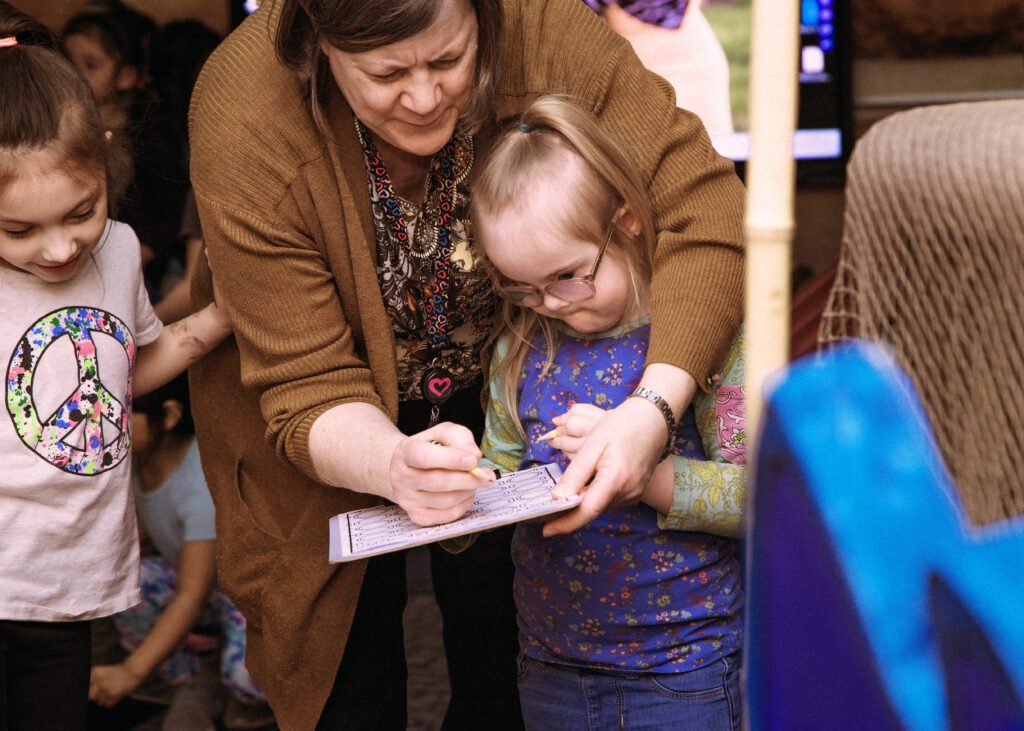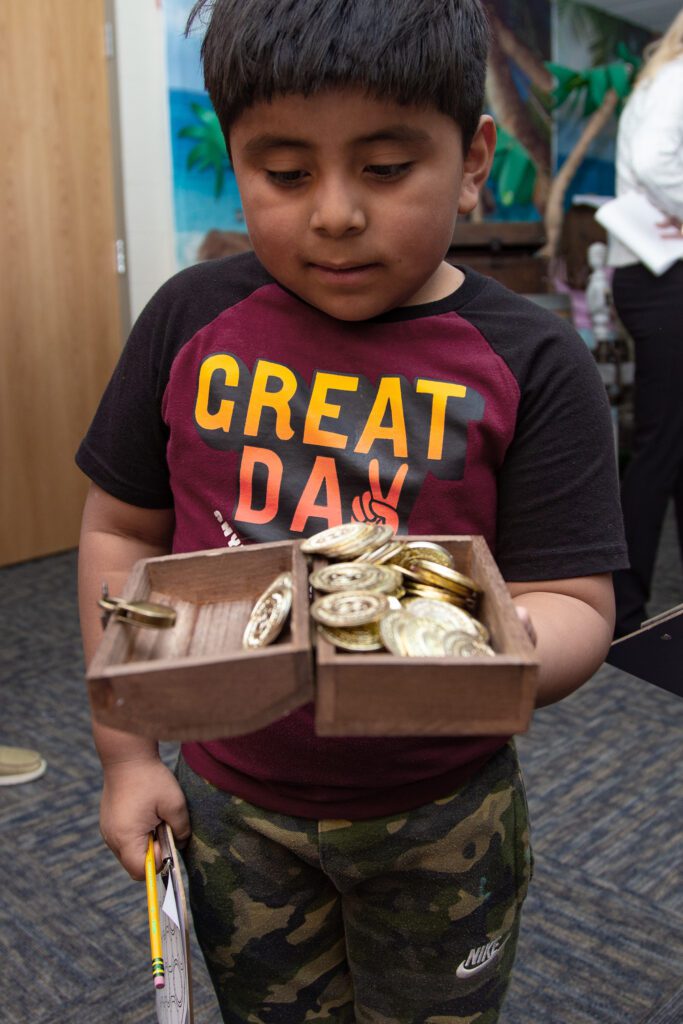This school year, Worthington third and fourth graders made the move from Prairie Elementary to the newly constructed Worthington Intermediate School. This left room for the 32 sections of kindergarten, first- and second-grade classes to spread out; this also made space for second-grade teacher Kristin Doeden to grow a dream — the Discovery Room.

Mrs. Doeden first had the idea for a hands-on learning room while taking a graduate education class. She shared the idea with the other Prairie Elementary teachers, and through the spirit of collaboration and help from a Southwest Initiative Foundation (SWIF) grant, that dream is now very real.
Using SWIF grant funds, the school was able to model the space after the concept of a children’s museum, outfitting this special room around rotating themes that engage kindergarteners and first and second graders.
Engagement in the K-12 years is part of cradle-to-career framework of Grow Our Own, our strategy to close the opportunity gap for our kids by investing in the people and systems that surround them. Our kids spend much of their time in school, which makes it an important place to provide the opportunities for academic, social and emotional growth that set our kids up for success.
When the COVID-19 crisis hit, SWIF launched an immediate response to ensure our region could access and leverage resources available, and we have deployed more than $27 million since March 2020. We secured dollars from the Minnesota Department of Education Governor’s Emergency Education Relief Fund, which were used to support this project.
If you visit the Discovery Room while it is in use, like our Youth and Community Officer Amy Brustuen, it will look like a lot of excited kids playing. This is true, but the students are also engaging with language, math, geography, civics, fine motor and social-emotional learning skill tasks that are cleverly placed throughout the room. Through experiences in this room, teachers can meet many Minnesota Department of Education learning standards in creative ways that students enjoy and remember.
“I was really excited to see this grant request come through. Understandably, many educators and providers are asking for resources just to get by. This grant request really stood out because in addition to community collaboration, it took a chance at doing something new and centered all of that upon childhood play.”
Amy Brustuen
On the day Amy visited, the kindergarteners were scavenging through a tropical pirate ship looking for treasure. The treasures were sight words hidden around the room. After finding their missing words, some kids stopped at the sensory table to pick up seashells that had different root words printed on them. They circled up at the end for an organized chat with Ms. Bell before going back to their room for their last few minutes of class for the day. One little girl was hanging back, and Ms. Bell asked the student if something was wrong. The tearful little learner said, “I just never want to leave this place. It’s like a field trip every week!”

The story of this room would not be complete without mentioning the work of the community, school support staff and volunteers like Bonnie Beman. Also known as “Grandma Bonnie,” she serves as artistic coordinator for the space. Whether it’s crafting and curating items or engaging the youth and teachers in dreaming up the next big adventure, Grandma Bonnie’s dedication and talents are the backbone of this project. Her dedication does not go unnoticed by the youth who treat her as somewhat of a celebrity.
Grandma Bonnie and the school community are always thinking of improvements and future projects as well as ways to bring in older students in a volunteer capacity. Themes for the Discovery Room this year included gardening and farmer’s market, a pirate ship, a Lakota village and fairytale land – complete with twinkle lights.
Principal Heidi Meyer points out that it is common for some of their students to be first-generation immigrants. Exposure to things such as a certain set of fairytales is part of the State English Language Arts standards but can be among the many new experiences for these youth. Incorporating these concepts into the Discovery Room builds on their knowledge and teaches skills such as sequencing and re-telling. By incorporating multiple modes of play and learning, youth are able to maximize all learning opportunities in a setting that’s inclusive for all. The adults have benefitted from this room too. There is an excitement about engaging in meaningful play, working together, making community connections, and — according to a group of dads at the recent kindergarten round up — it’s fun just to be in the room.




